Whether you are just seeing a green tint or a full green screen on your TV, your TV becomes pretty much unwatchable and needs to be fixed.
Luckily, it is very easy to fix your TV green screen, regardless of brand, as the problem is usually caused by simple connection issues that plague all TVs.
We’re going to cover every possible fix if your TV picture is green, and by the end of I am convinced that we will have your TV working as normal again.
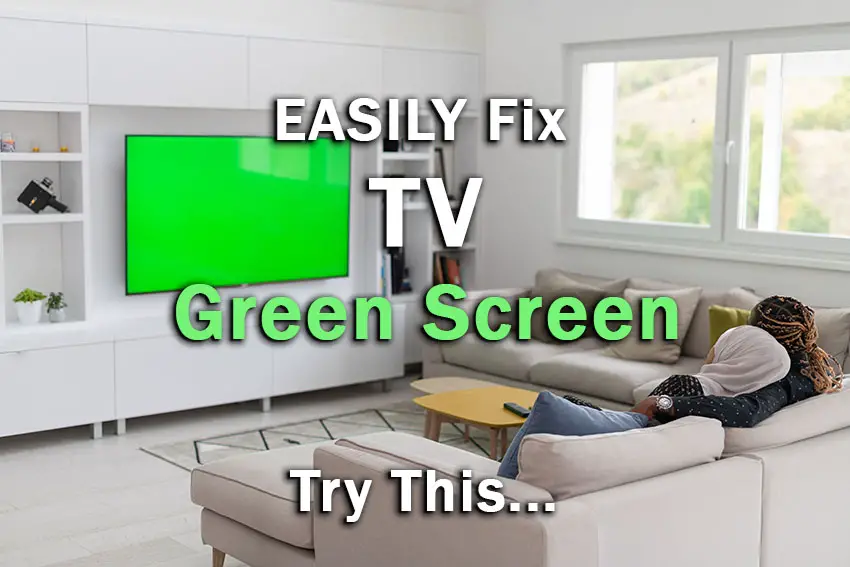
Fix TV Green Screen
To fix a green screen on your TV, remove all HDMI cables from your TV, clean the contacts in the cable and connector with compressed air and firmly push the cables back into a different HDMI input. You can also try switching off HDR+ and RGB modes.
This works for nearly everyone to fix their TV’s green screen, but if it hasn’t worked for you, then we can try a handful of software fixes to diagnose and treat the problem.
Let’s start with a few basic steps that you might have overlooked before we get into the more in-depth fixes.
1. Check the HDMI Cables are Properly Seated
The most common reason for your TV to display a green screen is a poorly seated cable that creates signal noise which is displaying as a green screen.
This comes down to either a:
- Faulty HDMI cable with a break in it
- Damaged HDMI port with broken pins
- Poor HDMI connection where the cable and connector are not fully making contact
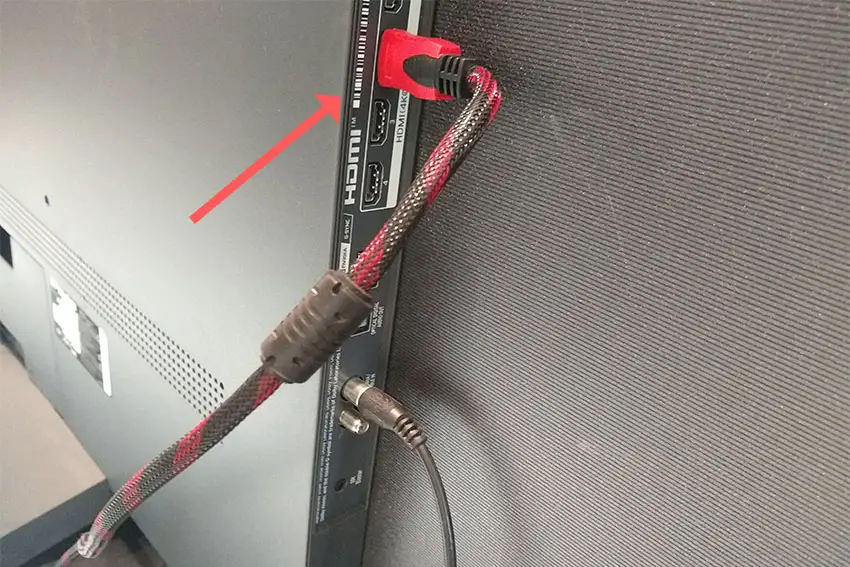
To check your HDMI and other cables:
- Switch off your TV.
- Remove any HDMI or other physical cables connected to the back of your TV.
- If you have any compressed air, use that to clean the contacts both of the cable and in the connector on the TV. If you don’t have compressed air, then blow gently on them.
- Firmly push the cables back into their slots on the TV.
- Switch your TV back on again.
It that hasn’t fixed the problem, then try using a different HDMI input. Most TVs have 3 or 4 HDMI ports.
If you have one that is on a different part of the TV then that would be the best one to try, as it this should have a separate connection to the TV’s main board.
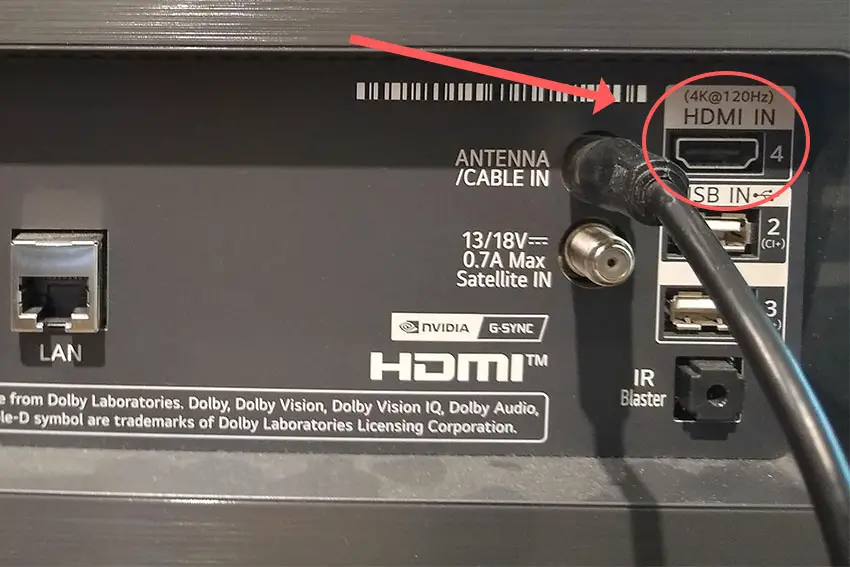
Plug you HDMI cable into the new port, note the number next to it, then choose this HDMI input on your TV, by using the Input or Source button on your TV remote or the Input or Menu button on your TV itself.
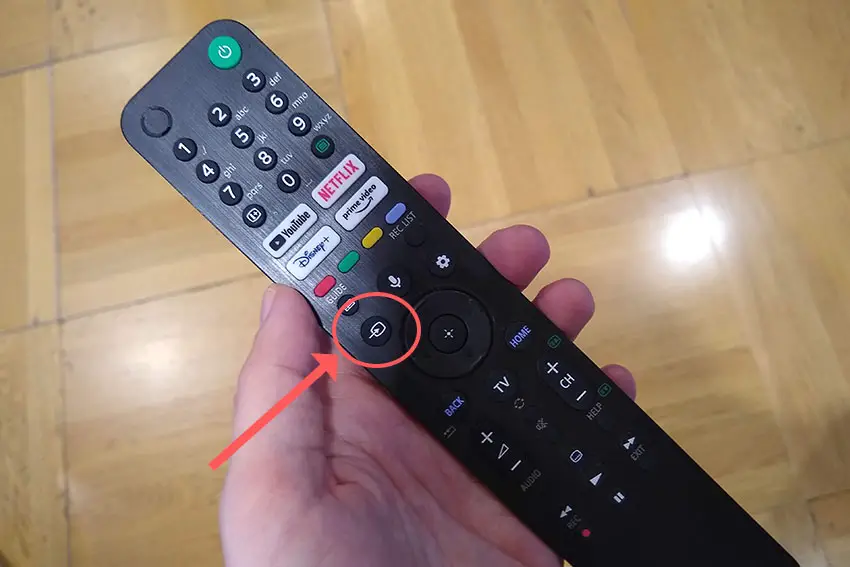
You can also try removing all external devices, including those connected by Bluetooth and any coaxial or signal cables, so that the TV only has a power cable going into it.
When you turn your TV on, this means the screen will be black as it is not receiving any picture, potentially making it tough to see the green screen.
Pull up the on-screen menu to see if the green screen is still there. If it is, this means that your external connections are fine and the problem is located within the hardware of your TV.
If the green screen has gone, then try re-seating your HDMI and other cables one by one, until you find the damaged cable that needs replacing.
2. Power Cycle or Cold Boot Your TV
With modern electronics, it’s possible that the green screen on your TV is caused by something stuck in your TV’s flash memory, which can also be a problem if you are seeing a blue tint on your TV.
Power cycling your TV will clear out any issues with non-permanent memory and reset your main board without losing your personal settings.
This is quick and painless and won’t cause you to lose any of your saved settings.
- Switch off and unplug your TV.
- Hold down the physical power button on the TV for at least 15 seconds.
- Wait for at least 30 minutes for any residual power to drain from the TV’s capacitors (which are capable of storing charge for several minutes).
- Plug your TV back in and try switching it on. You should see a red light if you have been successful.
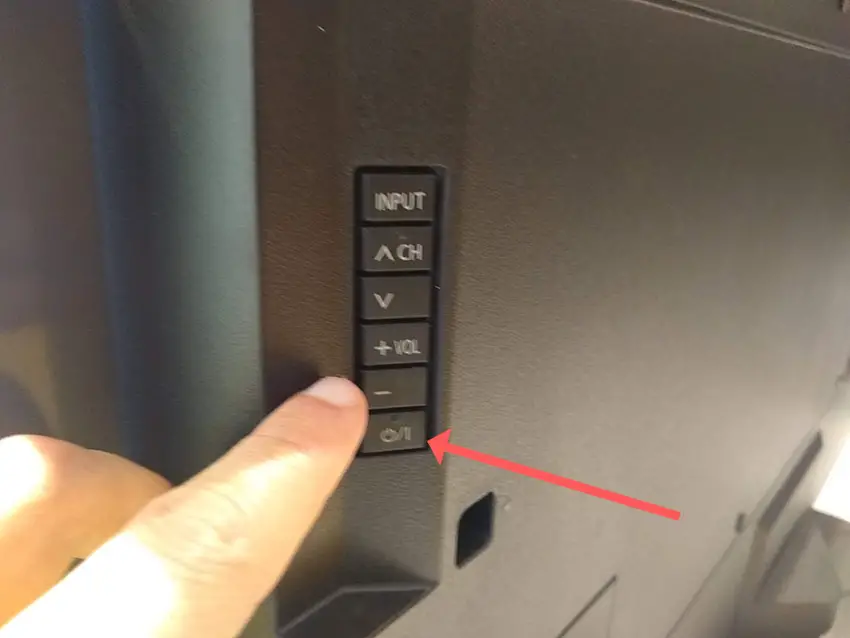
Make sure you do wait for the full 30 minutes before plugging your TV back in – you would be surpised how long the components within your TV can hold charge, and you want to make sure it has fully reset.
Although this seems a very basic step, don’t overlook it because in the vast majority of cases a simple soft reset fixes most issues.
Most people will now have their TV fixed and back up and running. If this isn’t you, then we’ve got a few more basic fixes to try.
3. Change Your Picture Settings
Most TVs have an option to change the color temperature or other aspects of the picture.
The actual steps will vary from model to model, but most color options can be found in the Settings and Picture menus.
You can try the various picture modes to see if they fix the green screen, and you should switch off Energy Saving mode or Ambient Light Sensors if your TV has them.
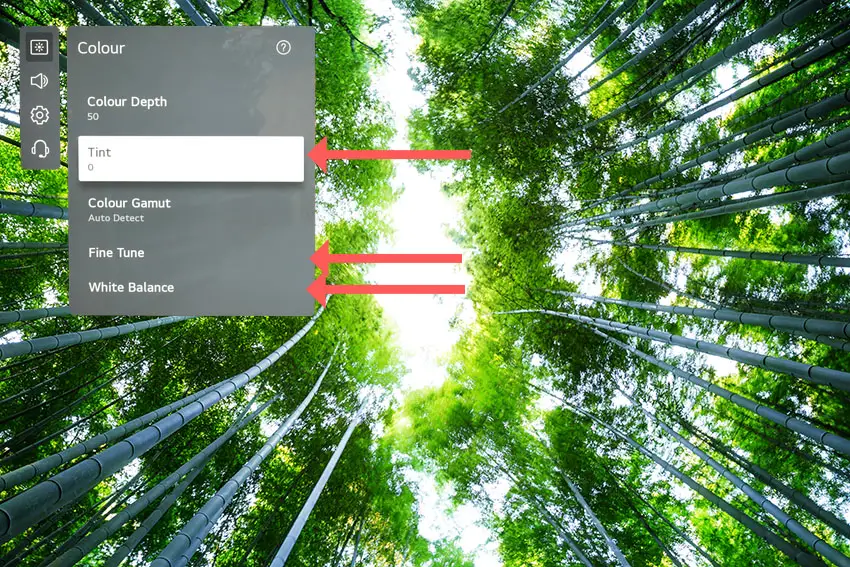
You can use the Color and Tint options, and you can also try changing the Gamma and White Balance, and hopefully you will be able to get a decent picture without any color tint.
For some TVs, such as LG models, you can also access a secret menu to override the colorimetry of any HDMI connections, which can make a big difference to any color tints in your picture. This is covered in detail in the video below. Take a look at YouTube for advice for other manufacturers.
4. Switch Off HDR+ and RGB Modes
Both HDR+ and RGB modes are implicated in causing a sudden green screen of death with some TVs.
To switch off HDR+ and RGB modes for most TVs, you should go to Settings and look in the Picture menu.
HDR+ and RGB modes are usually located within Expert Settings or Advanced Settings depending on the manufacturer.
You can also try switching between these two settings, having one off and the other on to see if that makes any difference.
5. Update Your TV’s Firmware
Software and firmware issues have been known to cause problems with the display on many TVs.
As with any product, you should ensure that you have updated your TV’s firmware to the latest version, even if it is new.
Smart TVs often support auto-updating of firmware, but you can’t assume that this is turned on for you.
To update firmware for most TVs:
- Press the Settings button on your remote and go to All Settings.
- Go to General.
- Then About This TV.
- Check Auto Updates are on, and use the Check for Updates button to manually see if you are running the most recent firmware version.
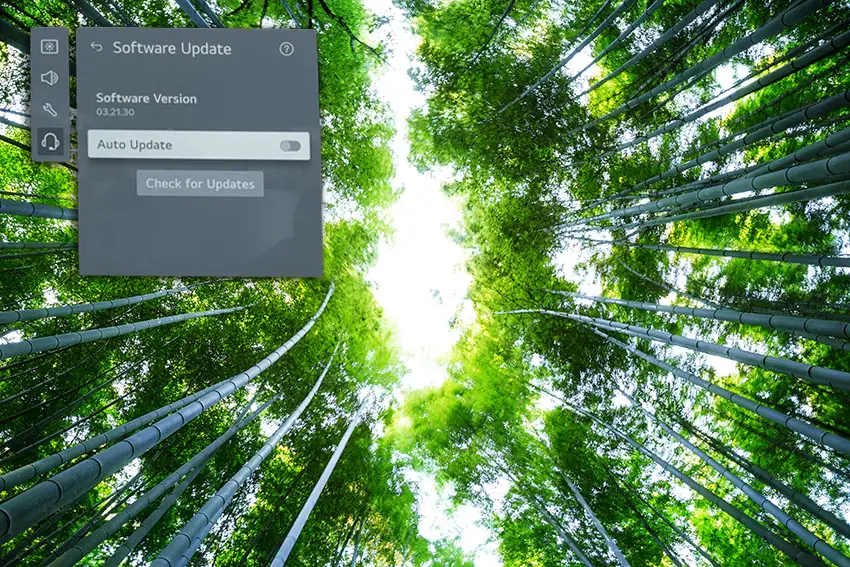
Some older TVs can only be updated using USB. Here, you have to download the latest version of the TV’s firmware direct from the manufacturer’s website, load it from your computer onto a USB stick and install on your TV.
You can get the latest firmware versions from LG and Samsung, among others just by Googling for their support websites.
6. Factory Reset Your TV
Factory resetting your TV will result in you losing all of your personalization settings and any downloaded apps.
Your TV will return to its factory state just like when it was brand new, so this step isn’t to be taken lightly, but it won’t damage your TV.
The exact steps to factory reset a TV vary by manufacturer, but you can easily find these by Googling a manufacturer’s support site, where reset steps will be fully covered.
Usually, you can find the reset option in Settings -> General or System -> Factory Reset.
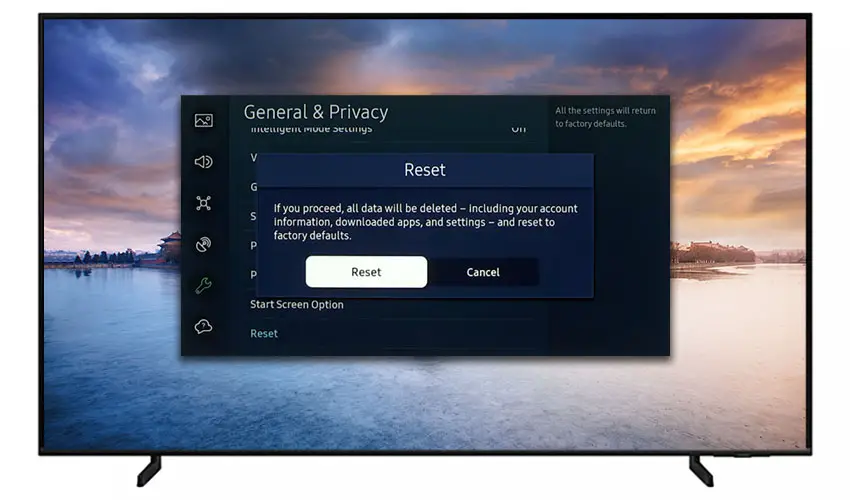
Some TVs might require a PIN or password to perform the reset, but this is usually 0000 (four zeroes) or 1234 for most manufacturers, unless you have changed this at some point.
Further Support to Fix TV Green Screen
Every TV manufacturer has dedicated support staff who should be only too happy to help you fix your TV if you have been unable to sort it out yourself.
It’s likely that if none of the above fixes have worked for you, that a component like the TV’s main board needs replacing, although this would require some further investigation to determine.
It’s always a good idea to speak directly to customer support at your TV’s manufacturer in this case, as even if they won’t fix your TV, they might still offer you a discount off a future model if you pester them hard enough!
Conclusion
You can fix a TV green screen by:
- Checking the HDMI cables are properly connected.
- Power cycling your TV.
- Changing your picture settings.
- Switching off HDR+ and RGB modes.
- Updating your TV’s firmware.
- Factory resetting your TV.
If you’re still struggling, then I would strongly recommend contacting your TV manufacturer’s customer support directly, as they have almost certainly seen your exact problem before, and will be best placed to advise you how to fix it.
Read More:
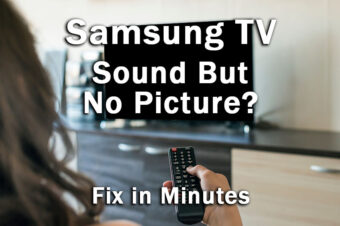


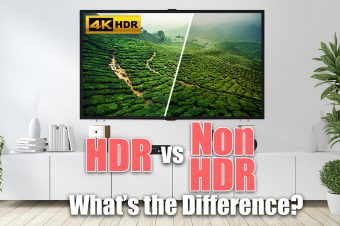

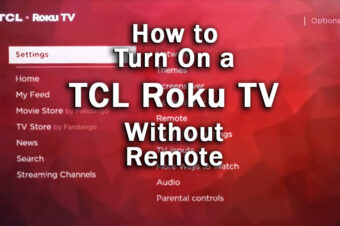
Leave a Reply